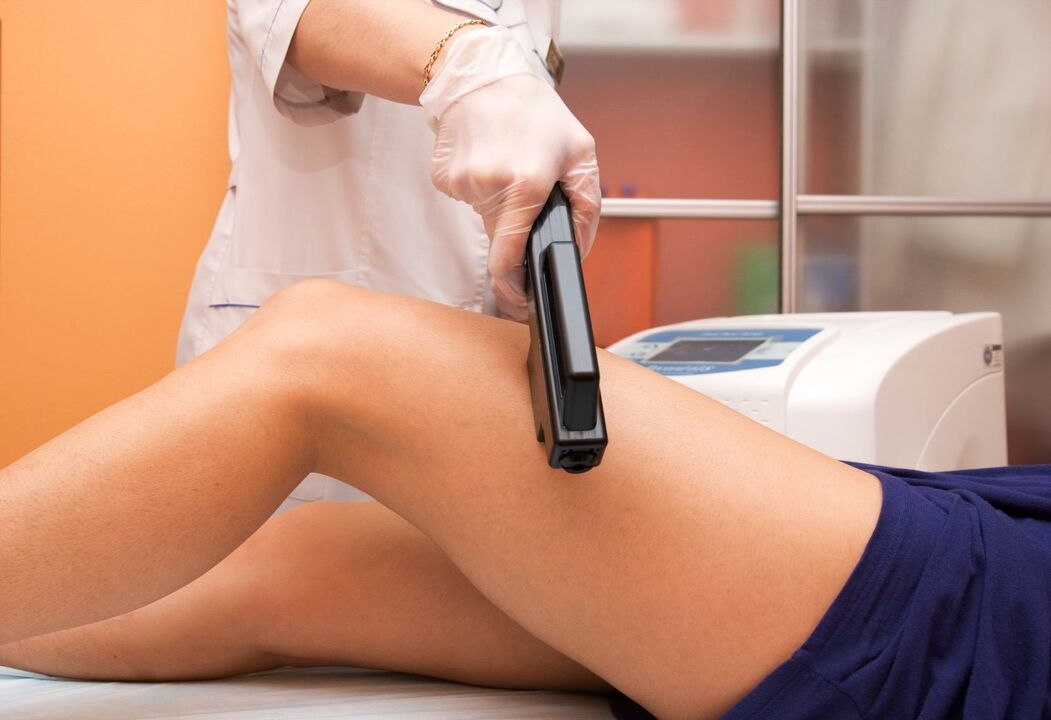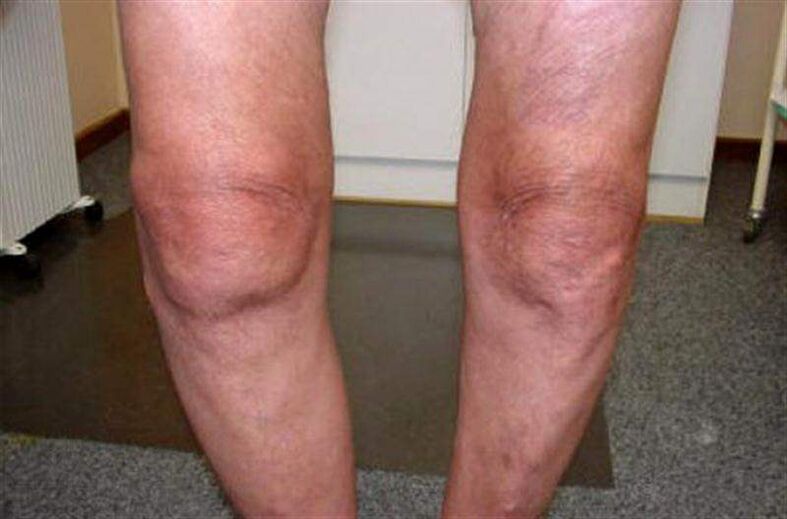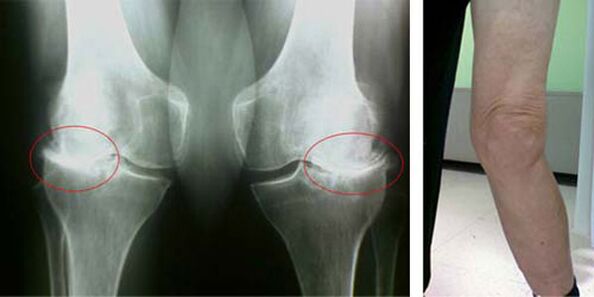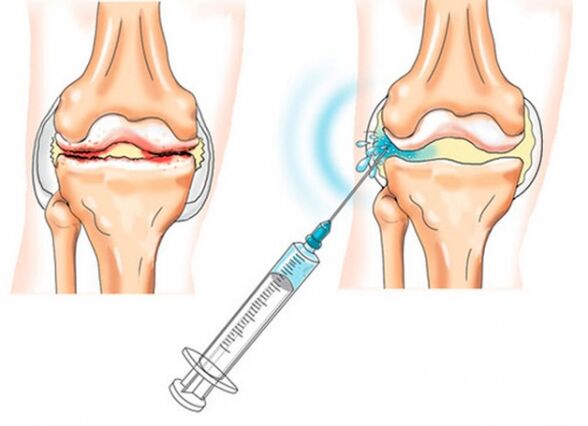
Knee osteoarthritis (knee joint disease) is a disease of the cartilage of the knee joint in which it is gradually destroyed and replaced by connective tissue. Knee joints can develop suddenly when there is no sign or cause of joint damage. In other cases, the onset of the disease is associated with trauma or other joint disorders.
Features
In a healthy knee joint, cartilage is a lining that does not allow bone contact, thus eliminating the possibility of injury while walking. The diseased cartilage cannot cope with this function, so the joints show signs of stiffness and pain during movement. Due to internal pathological changes, the condition becomes permanent when the thinning of cartilage tissue causes the bone to thicken and create conditions for the appearance of bone spurs - osteophytes, which can cause acute pain.
Causes and symptoms
Knee osteoarthritis develops gradually, but since the knee joint is held in the correct position by the thigh muscles and four ligaments, we do not notice obvious symptoms of cartilage damage. It is this anatomy that eliminates the manifestation of the main symptoms during the onset of the disease.
A reliable cause of the disease has not been medically determined. However, there are some factors that, under certain conditions, can play a role in causing the disease. These include injuries, strenuous exercise and being overweight. As a separate cause, one can view this violation as a hormonal imbalance.
Patients with suspected knee arthropathy may experience the following symptoms:
- Pain in the knee (possibly in the lower leg) of a painful nature;
- Pain syndromes associated with weather changes;
- Pain that worsens after walking up stairs, walking for long periods of time, or standing;
- reduce pain at rest (at night and at rest);
- Pain starts (after rest);
- stiffness of the knee;
- pain when bending/extending the leg;
- Crunching, swollen joints.
Because of the risk of complications, this condition of the knee requires emergency medical attention, at which point fluid may begin to build up in the joint. Doctors perform external examinations on patients and prescribe examinations, which treatment options are selected based on the results.
polls
The initial stages of pathology such as knee arthropathy are not visually manifested in any way. However, over time, the patient will notice signs of knee deformity, as well as characteristic bending (inward) along the axis of the lower leg. Crunch also occurs when you need to bend your leg.

The presence of pain, limited movement of the knee makes a person see a doctor and get checked. To do this, he needs to pass tests and have X-rays of the diseased joints. Magnetic resonance imaging is performed if these measures are insufficient to confirm arthropathy of the knee. Based on the data collected, the doctor chooses the best treatment.
treatment method
Modern medicine has sufficient means to treat knee osteoarthritis. Also in clinical practice, new approaches to traditional methods of treatment are being developed and actively applied.
The basic treatment of knee joint disease is adjuvant treatment.
An example is exercise therapy, which is part of restorative medical physiotherapy complemented by psychological work with the patient.
Help treat knee osteoarthritis, such as massage, exercise, hydrotherapy and other repair methods. For relief, patients are advised to wear knee pads or bandages. It is impossible to treat arthritis without adhering to the correct diet, which should include white meat, not red meat, sardines, salmon, vegetables, fruit, and enough water (up to 7 cups).
Severe cases of disease are treated promptly, using a sparing approach with full or partial prosthetics.

medical treatement
When treating arthritis with medication, actively use the following:
- Non-steroidal anti-inflammatory drugs. Prescription medications to help treat conditions such as swollen and swollen knees;
- chondroprotective agent. The preparation contains substances that nourish the cartilage tissue, heal its structure and restore the cartilage coating of the joint. If the cartilage is almost completely destroyed, do not use chondroprotective agents for knee joint disease (usually this is typical of stage 3);
- Vasodilator pills. With their help, you can treat nighttime pain in the knee joint due to spasm of small blood vessels.
- Intra-articular injections of corticosteroids are used to treat inflamed knee joints. Injections can relieve swelling and swelling faster, thereby improving the patient's condition. However, due to its high potential for side effects, such injections can be given 1 in 2 weeks. If a person has symptoms of changes in joint anatomy, such as skeletal deformities, it does not make sense to inject into the joint.
In the initial stages of arthropathy without concurrent joint edema (synovitis), the patient may be injected with a chondroprotective agent containing enzymes. They help partially restore cartilage tissue, with the disadvantage of requiring 5-10 injections of the drug.

Good results (in 80% of cases) can be achieved with traction (knee extension).
It is performed using special equipment or manual therapy. This traction increases the distance between the bones, thus reducing the load on the joint and restoring its performance.
ointment
In the drug therapy for the treatment of joints, various types of ointments and gels are actively used, mainly composed of natural substances. In pharmacies, ointments can be purchased without a prescription, but it won't hurt to consult with the attending physician about their use. You also need to know that ointment does not cure knee disease, but only supplements the main treatment.
Effective relief of joint inflammation with NVPS (non-steroidal anti-inflammatory drug) based ointment.
A warming ointment containing capsaicin is used to improve circulation.
Ointments containing salicylic acid are used to treat knee inflammation.
Ointment - chondroprotective agents are successfully used in the initial stages of the disease to restore damaged cartilage. In order for the active substances of the ointment to penetrate better into the inflammatory foci, it is necessary to combine them with a physiotherapy procedure - sonotherapy.
Support measures
massage
In the complex treatment of arthropathy of the knee, therapeutic massage is actively used, which helps to normalize the blood circulation of the damaged joint and restore its function. Massage not only heals, but also awakens the body's defenses, allowing you to quickly restore the efficiency of joint organs.
For inflamed joints, massage in the knee area and general rehabilitation massage are usually used. For better results, doctors recommend combining a general massage with a segmented massage on the knee area.
Due to the positive effect of massage on muscle tone, the patient's muscle strength increases and the lost properties of the knee joint are restored. Therapeutic massage begins with stroking, followed by rubbing to improve joint mobility. Next is stretching. The massage ends with (not intense) vibrations that are beneficial to the muscles. All of these techniques are included in the massage to relieve pain and restore freedom of movement in the knee.

Knee pads and braces
To reduce the load on the knee joint and the muscles, ligaments and tendons, it is recommended that the patient wear a bandage on it. Knee bandages help evenly distribute pressure on joint organs, thereby stimulating regeneration of damaged tissue.
Since bandages are one product, the range of these products is differentiated in various colors and corporate styles. Bandages are also metal, ceramic, plastic, etc. All of these features are secondary. Most importantly, you should only buy knee pads or bandages after consulting your doctor.
Choose a knee pad to wear according to the application. Bandages required during the postoperative period must be carefully sized. This knee pad is a rigid bandage.
It is best to wear underwear made of cotton or other natural materials under the knee pads. Dog hair knee braces have significant healing properties, warming the joints and reducing inflammation.
The most popular type is a neoprene bandage, reinforced with spiral ribs that immobilize joints and muscles. Orthopedic bandages are often used as protection during exercise.
You need to choose an open or closed knee brace depending on the nature of the pain. In the case of severe pain, the knee brace should have stiffeners and fully cover the joint. For mild pain, open knee braces should be worn.
A novel requirement is knee pads made of elastane or polyester. This bandage lasts a long time and is easy to care for.
in conclusion
A distinguishing feature of modern approaches to the treatment of knee arthropathy is the combination of traditional methods and technologies based on new-generation drugs, as well as improved surgical approaches. Among the new generation of drugs, biostimulants, chondroprotective agents, and synovial fluid protective agents are widely used. Forms of knee arthropathy that are difficult to treat conservatively can now be treated with less invasive surgery, namely arthroplasty, arthroscopy and endoprosthesis.



















